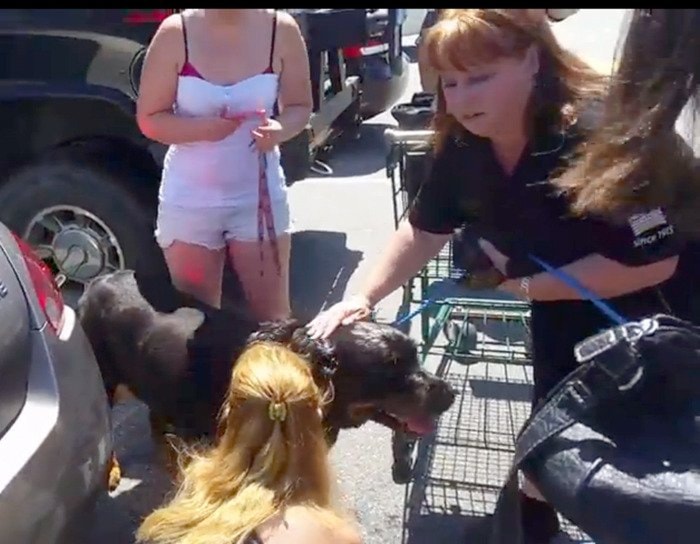A rottweiler locked in Humvee parked in the blazing sun was rescued Thursday by a group of bystanders in Maple Ridge.
The dog was barking and panting inside the black four-wheel drive vehicle, which was parked at Save-On-Foods on a day when temperatures soared to over 32 degrees celsius.
As a window of the Humvee was partially open, Liam Healy, who works at Save-On-Foods, reached in, unlocked the door and freed the dog.
Healy filmed the rescue and posted a clip to YouTube and Facebook.
The group of rescuers led the dog to shade and gave him water until the owner arrived. Witnesses said the owner was irate, snatched the dog and drove off in the Humvee, which has personalized Alberta license plates.
Despite on-going warnings and public service announcements about the dangers of leaving pets in hot cars, B.C. SPCA constables are being inundated with calls this summer to rescue pets left in parked vehicles.
Last month alone, the B.C. SPCA responded to 228 calls to rescue dogs in distress who had been left in hot cars by their guardians.
“The media is wonderful about helping us get the message out that it can be fatal to leave your pet in a hot car, even for 10 minutes, but still we receive hundreds of calls about animals in distress,” said Lorie Chortyk, general manager of community relations for the BC SPCA. “We can’t stress strongly enough how dangerous this is for your pet.”
With temperatures soaring across British Columbia this week, the SPCA is urging people to leave their pets at home if they can’t keep them safe.
“The temperature in a parked car, even in the shade with windows partly open, can rapidly reach a level that will seriously harm or even kill a pet,” says Chortyk.
In just minutes, the temperature in a parked car can climb to well over 38 degrees Celsius (100 degrees Fahrenheit).
Dogs have no sweat glands, so they can only cool themselves by panting and by releasing heat through their paws.
Dogs can withstand high temperatures for only a very short time – in some cases just minutes - before suffering irreparable brain damage or death.
Pet owners should be alert to heatstroke symptoms, which include: exaggerated panting (or the sudden stopping of panting), rapid or erratic pulse, salivation, anxious or staring expression, weakness and muscle tremors, lack of coordination, convulsions or vomiting, and collapse.
“If you’re used to letting your dog accompany you on errands, you might feel guilty leaving him behind on hot summer days. But your dog will be much happier – and safer – at home, with shade and plenty of fresh cool water,” Chortyk adds.
If your dog shows symptoms of heatstroke, you should do the following:
• Immediately move the animal to a cool, shady place;
• Wet the dog with cool water;
• Fan vigorously to promote evaporation. This will cool the blood, which reduces the animal’s core temperature;
• Do not apply ice. This constricts blood flow, which will inhibit cooling. Allow the dog to drink some cool water (or to lick ice cream if no water is available);
• Take the dog to a veterinarian as soon as possible for further treatment.
